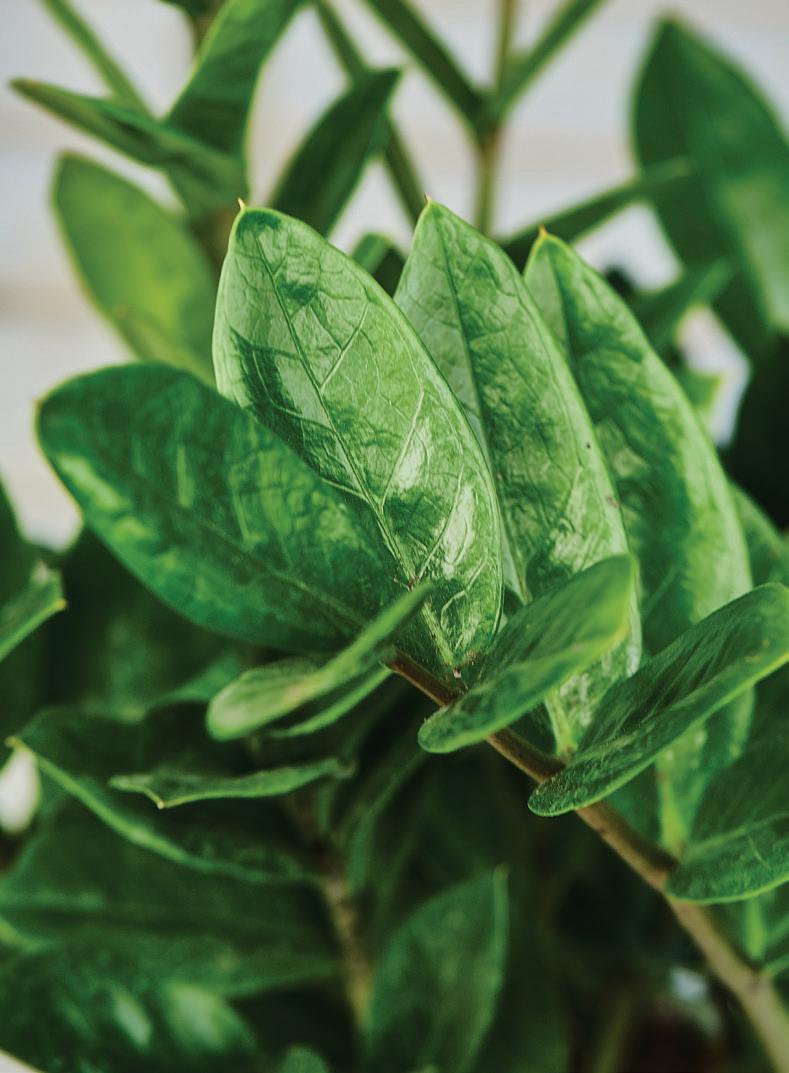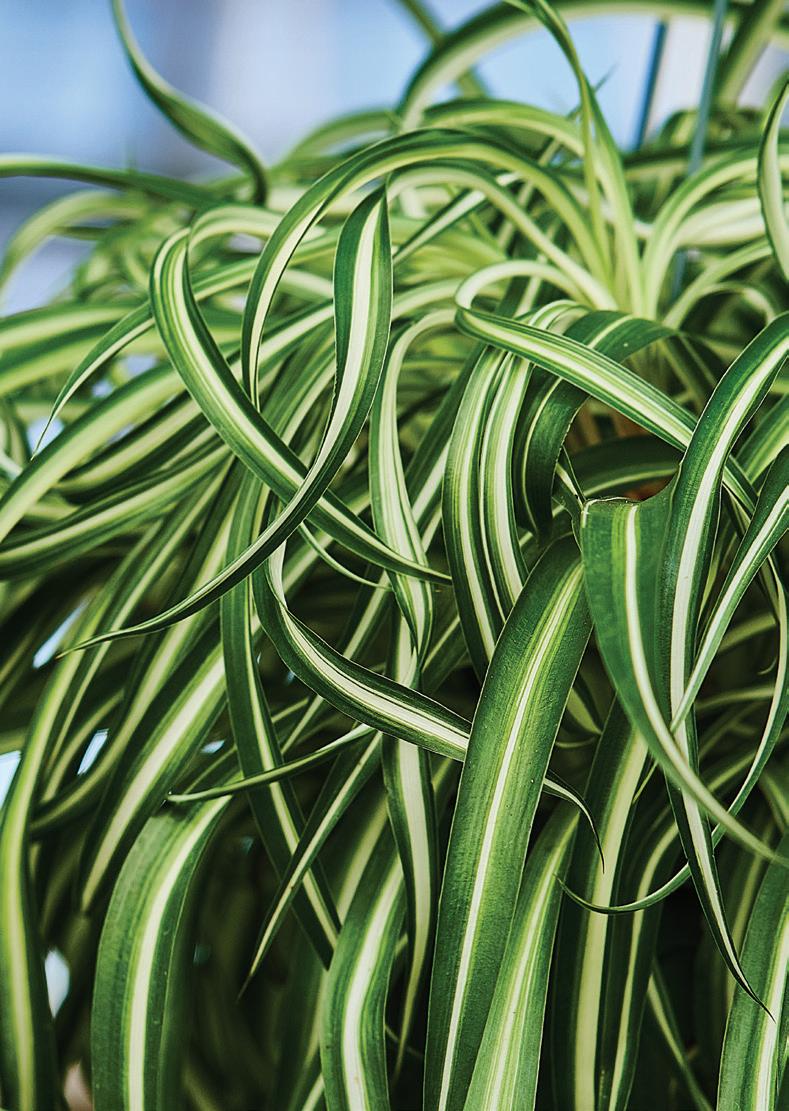
2 minute read
Turning Over a New Leaf
by Local.
An easy houseplant guide for bringing some greenery into 2023.
By Mollee Francisco
THERE’S NOTHING LIKE A GLIMPSE OF GREEN after a long, white winter. To help survive the days until the first daffodil buds poke through, we asked Lauren Leuer and Cindy Melby, plant buyers for Plymouth-based wholesale florist Len Busch Roses, to select some stylish houseplants to help bring the outdoors in.
ZZ Plant (zamioculcas zamiifolia)
With a stem length that can grow up to 3 feet, Melby likes this African native for its glossy leaves and architectural appearance. It is a “very, very easy, lowcare” plant that can tolerate a variety of light conditions.

» WATER: Good drainage is essential. Allow the soil to dry all the way between waterings, especially in low light conditions. Make sure any excess water is emptied after watering.
» LIGHT: It can tolerate bright to low, indirect light, but avoid direct sunlight.
» WARNING: All parts of the ZZ plant are toxic to cats and dogs and should be kept away from children. When handling the plant, it is recommended to use gloves or wash hands afterwards.
Notes: Varietals include the raven with dark, almost black, foliage and the compact zenzi.
Spider Plant (chlorophytum comosum)
Although the spider plant has gone in and out of fashion over the years, its variegated foliage and adaptable nature make it a perennial favorite, Melby says. Spider plants are manageable, transition beautifully between indoors and outdoors and are easy to propagate and share. It's also an ideal plant for hanging baskets.

» WATER: Allow the soil to mostly dry out between waterings. (Some moisture under the top inch or so of soil is OK.)
» LIGHT: Offer bright indirect to medium light.
Notes: Spider plants are self-propagating. It produces little babies off the main plant, which can easily be removed to be replanted.
Bird of Paradise (strelitzia nicolai)
The giant white bird of paradise can add tropical flare and height to a room. Its name comes from the plant’s flower, which resembles a bird with a purple head and white crest. With its big, banana-like leaves, the bird of paradise is exotic without being fussy, Melby says.
» WATER: Bird of paradise enjoy the warmer months, so keep soil moist throughout the summer and allow it to dry out a bit more as it cools off.
» LIGHT: Offer bright indirect to partially direct sun.
» WARNING: These are toxic to pets.
Notes: With their large, unique blooms and a height of 3 to 6 feet, bird of paradise can make a statement in your home year-round or be a bright addition to your outdoor patio in the summer months.

Kalanchoe
The cheerful kalanchoe is a blooming succulent that comes in a variety of colors including yellow, red, orange, pink and white. It is prized for its ease of care and long bloom.

» WATER: Kalanchoes do best when water drains well and dries out between waterings. Only water when the top 1 to 1.5 inches of soil have dried out.
» LIGHT: Kalanchoes thrive with lots of light. Full sunlight or bright, indoor light is best.
» WARNING: These, too, are toxic to pets.
Notes: The kalanchoe bloom cycle lasts for several weeks or even months. Once the original flowers fade, the foliage remains dark and beautiful, and the plant will live and rebloom for many years, although these subsequent blooms will not be as spectacular as the first.
For a list of local houseplant growers, visit plymouthmag.com


Len Busch Roses, 4045 County Road 101 N.; 800.659.ROSE, lenbuschroses.com lenbuschroses @lenbuschroses
LenBuschRoses












